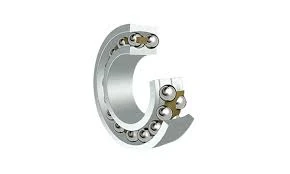
Oct . 12, 2024 06:11 Back to list
taper roller bearing back to back arrangement
Understanding Taper Roller Bearing Back-to-Back Arrangement
Taper roller bearings are essential components in various mechanical applications, known for their ability to handle both radial and axial loads effectively. Among the various configurations of these bearings, the back-to-back arrangement stands out due to its unique load distribution characteristics and enhanced stability.
What is a Taper Roller Bearing?
A taper roller bearing consists of an inner ring, an outer ring, tapered rollers, and a cage. The tapered shape of the rollers allows them to make contact with the raceways at a precise angle, enabling the bearing to support both axial and radial loads simultaneously. This feature makes taper roller bearings suitable for high-speed applications and systems requiring high radial and axial load capacity.
Back-to-Back Arrangement Explained
In a back-to-back configuration, two taper roller bearings are mounted in such a way that their inner rings face each other while their outer rings are positioned outward. This arrangement leads to a setup where the equivalent load direction is effectively minimized, thus enhancing the overall performance of the bearing system.
One of the primary benefits of the back-to-back arrangement is its ability to support moments and provide high rigidity under loads. The loading forces exerted on the bearing create a counteracting moment that helps stabilize the shaft. This is particularly advantageous in applications like automotive wheel hubs, spindle applications, and machinery where axial and radial loads fluctuate or change direction.
Advantages of Back-to-Back Arrangement
1. Increased Rigidity The back-to-back configuration provides high stiffness, making it well-suited for applications that experience dynamic loads. The design effectively distributes the loads across the bearing, reducing the risk of deformation and enhancing the durability of the assembly.
taper roller bearing back to back arrangement

2. Load Distribution By positioning the bearings back-to-back, the arrangement allows for an even distribution of loads. This helps to prevent uneven wear and prolongs the service life of the bearings, ultimately leading to reduced maintenance costs.
3. Enhanced Load Capacity The ability to handle both radial and axial forces means that the back-to-back arrangement can accommodate higher loads without compromising performance. This makes it ideal for heavy machinery and equipment subjected to rigorous operational demands.
4. Reduced Sensitivity to Misalignment Bearings in a back-to-back setup are less sensitive to slight misalignments compared to other arrangements. This characteristic ensures that even with minor deviations in shaft positioning, the bearing system can still function effectively, contributing to enhanced reliability.
Applications
The back-to-back arrangement of taper roller bearings is widely utilized in various applications ranging from automotive assemblies to industrial machinery. Common uses include
- Wheel bearings in vehicles - Gearboxes where high precision is required - Spindles in milling machines and lathes - Pumps and compressors exposed to fluctuating loads
Conclusion
The back-to-back arrangement of taper roller bearings significantly enhances the load-bearing capacity and stability of mechanical systems. Its advantages of increased rigidity, effective load distribution, and reduced sensitivity to misalignment make it a popular choice for many engineering applications. Understanding the characteristics and benefits of this arrangement can help engineers and designers optimize their designs for improved performance and longevity, ultimately driving efficiency in various industrial processes.
Latest news
-
Premium Deep Groove Ball Bearings | High Speed & Reliability
NewsAug.29,2025
-
Durable Scaffolding Clamps - Secure & Reliable Tube Connectors
NewsAug.28,2025
-
Common Failures in Thrust Ball Bearings and Solutions
NewsAug.22,2025
-
How Tapered Roller Bearings Can Take Shock Loads
NewsAug.22,2025
-
Angular Bearings in High-Precision Spindles
NewsAug.22,2025
-
The Impact of Misalignment on Cylindrical Roller Bearing Performance
NewsAug.22,2025
